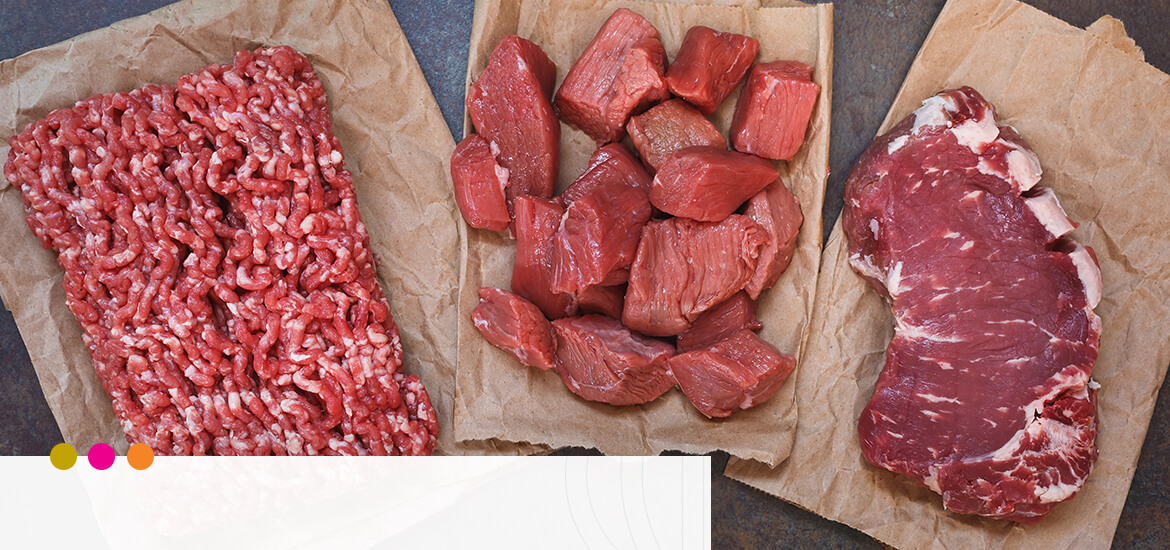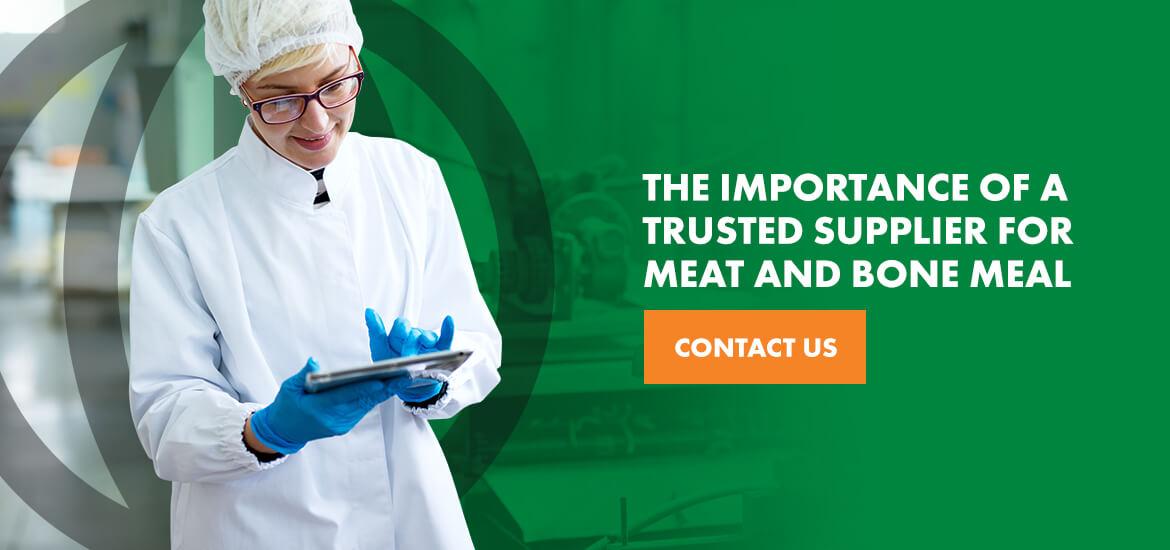What Is Meat and Bone Meal?
Table of Contents:
- Where Does Meat and Bone Meal Come From?
- How Is Meat and Bone Meal Made?
- Meat and Bone Meal Composition and Nutritional Value
- The Versatility of Meat and Bone Meal
- The Benefits of Meat and Bone Meal
Meat and bone meal (MBM) is a powerhouse ingredient that has been used for decades in animal feed formulations. It provides essential nutrients to various animals, from livestock to poultry to pets.
But what exactly is meat and bone meal, where does it come from and how is it used? Learn everything you need to know about MBM below.
Where Does Meat and Bone Meal Come From?
As the name suggests, MBM is a product that comes from animals. It’s typically produced in rendering plants or slaughterhouses, where leftover animal parts, known as butcher scraps, are processed.
Meat and bone meal can be derived from various animal sources, including livestock, poultry and fish. The type of animal used can impact the composition and quality of the meat and bone meal. The animals used in MBM production can also vary depending on local availability and regulations.
Butcher Shop Animal By-Products
How Is Meat and Bone Meal Made?
The production process starts with collecting animal parts, which are then ground into smaller pieces to facilitate further processing. Next, the ground animal parts are cooked to help remove excess moisture and fat and sterilize the material. The cooking process typically involves high temperatures, often above 212 degrees Fahrenheit, to break down the proteins and other components into a more digestible and stable form. The other purpose of the high heat is to kill pathogens in the meat.
Once cooked, the material is dried to reduce the moisture content and increase its shelf life. This is usually done by spreading the cooked material on large drying beds or using drying equipment like rotary dryers.
The rendering process produces a premium meat meal that is exceptionally digestible and can even surpass the protein content of whole meat. For instance, while whole chicken contains approximately 70% water and 18% protein, rendered chicken meal has only 10% water and a remarkable 65% protein. That’s almost four times the protein compared to whole chicken.
Drying helps to prevent spoilage and microbial growth, making the MBM more suitable for storage and transportation. It’s important to note that meat and bone meal production is subject to strict regulations and quality control measures to ensure safety and quality.
Meat and Bone Meal Composition and Nutritional Value
The specific composition of MBM can vary depending on the raw materials used, the rendering process and other elements. Looking at higher-grade meat and bone meal, we can determine a few of the following elements:
- Protein content: MBM is known for its high protein content, ranging from 40% to 60% or even higher.
- Fat content: Meat and bone meal may also contain variable amounts of fat, ranging from 10% to 20% or higher.
- Minerals and vitamins: MBM can be a source of minerals and vitamins, though the levels can vary. It may contain essential minerals such as calcium, phosphorus and zinc, and vitamins like vitamin B12 and vitamin A.

what is rendering
The Versatility of Meat and Bone Meal
MBM has a wide range of uses across various industries. Due to its high protein and nutrient content, it’s become a valuable ingredient in animal feed.
In the agricultural sector, it’s commonly used as a protein source in livestock and poultry feed, providing essential amino acids and minerals for animal growth and development. MBM is also used in pet food to enhance the nutritional value of pet diets, particularly in formulated feeds for cats and dogs.
Here are some other specific ways in which MBM is used:
-
- Aquaculture feed: Meat and bone meal is used as a protein-rich ingredient in fish feed for aquaculture. Fish, particularly carnivorous species, require high protein levels in their diet for optimal growth and nutrition.
- Biogas production: Through anaerobic digestion, MBM can be broken down by microorganisms without oxygen, producing biogas as a renewable energy source. Biogas can be used for heat, electricity or vehicle fuel, providing a sustainable and renewable alternative to fossil fuels.
- Soil amendment: Meat and bone meal can be used as a soil amendment to improve soil fertility and structure. As a natural source of organic matter, nitrogen, phosphorus and calcium, meat and bone meal can enrich soils and promote healthy plant growth.
- Composting: Adding meat and bone meal to compost piles can increase the nutrient content of the compost, providing a source of nitrogen, phosphorus and calcium for the decomposition process.
- Animal feed supplements: As mentioned, meat and bone meal is often used as a source of calcium and phosphorus in specialized animal feed supplements, such as mineral blocks or lick tubs. These supplements are often used to provide livestock and other animals with essential minerals for proper bone development, nerve function and overall health.
The Benefits of Meat and Bone Meal
Overall, meat and bone meal can offer several benefits when used in animal feed products. Some of the potential benefits of MBM include:
- High protein and nutrient content: As mentioned, MBM is a rich source of protein and can be a nutrient-dense ingredient.
- Resource utilization: Meat and bone meal is often produced from animal by-products unsuitable for human consumption, such as bones, trimmings and organs. Using meat and bone meal in animal feed can minimize waste and utilize these by-products, reducing the environmental impact and maximizing resource utilization.
- Feed palatability: Feed made from MBM can enhance the palatability of animal feed products, making them more appealing to animals. The rich protein and fat content in meat and bone meal can improve the flavor and aroma of the feed.
The Importance of a Trusted Supplier for Meat and Bone Meal
While MBM can provide many benefits for different feed applications, the quality and safety of this ingredient can vary depending on its source and processing methods. That’s why it’s crucial to source meat and bone meal from a reputable and reliable supplier, such as Baker Commodities.
Whether you’re a farmer or poultry producer, Baker Commodities can help fulfill your needs with high-quality meat and bone meal. By choosing a dependable source, you can be confident in the nutritional value and safety of the meat and bone meal you incorporate into your animal feed formulations.
Contact Baker Commodities to learn how we can supply you with high-quality protein meal for your needs.




